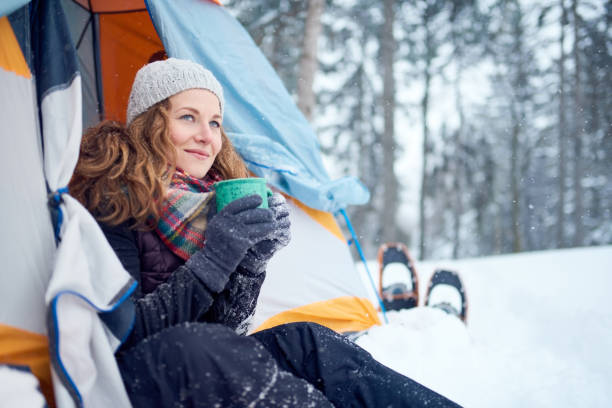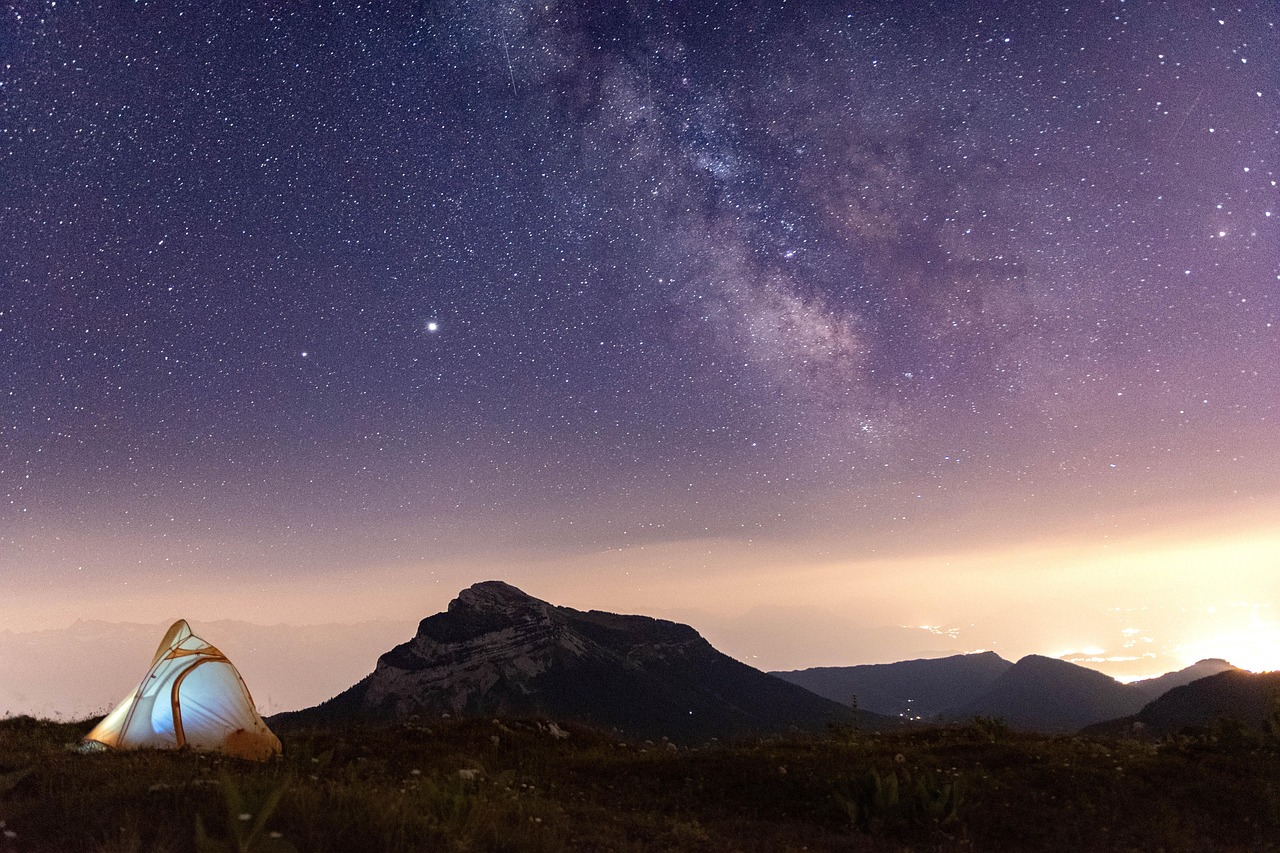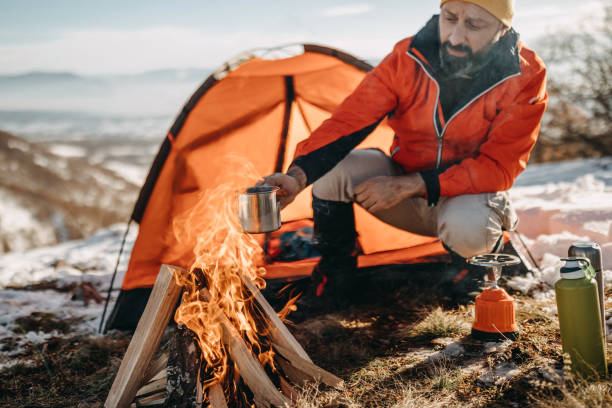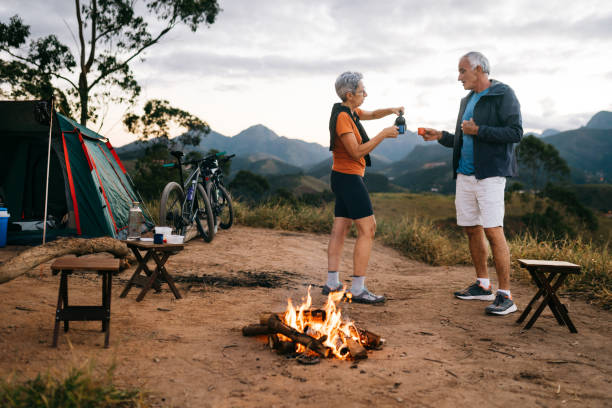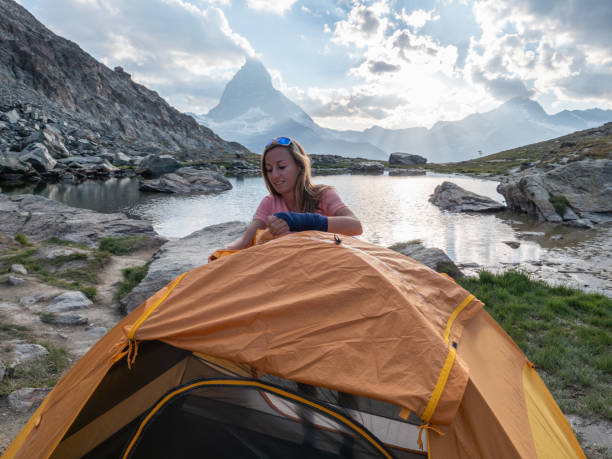Winter camping has a magic all its own. There’s something about the stillness of a snow-covered forest, the crisp bite of alpine air, and the satisfaction of waking up warm while the world outside your tent is frozen solid. But let’s be honest—camping in extreme cold isn’t for the faint of heart. If your shelter can’t stand up to wind, snow, and sub-zero temps, you’re in for a miserable (and possibly dangerous) night. That’s why we decided to test some of the best extreme cold weather tents on the market.
Over the past winter, we took a variety of tents out into the wild—across blustery plains, snow-covered valleys, and even a few frozen mountain ridges. This wasn’t just a product comparison. It was a boots-on-the-ground, frostbite-on-the-fingers kind of test. From integrated stove mats to storm-ready guy lines, we evaluated what really matters when the mercury drops.
Whether you’re a winter warrior prepping for your next expedition or just want to know you won’t wake up with your tent collapsing under snow—these insulated extreme cold weather tents delivered. Let’s dive into the ones that truly impressed us, starting with our trusty POMOLY Chalet.
Table of Contents
- POMOLY Chalet Cabin Tent
- ALPS Mountaineering Tent
- THE NORTH FACE Tent
- Marmot Thor Tent
- BISINNA Winter Tent
- GEERTOP Camping Tent
- Rbm Outdoors Hot Tent
- Our Verdict!
- How to Choose the Best Extreme Cold Weather Tents
- Double-Wall Construction with Snow-Ready Fabric
- Sturdy Frame and Wind Resistance
- Heat Retention and Stove Compatibility
- What is the warmest kind of tent?
- What is the best tent material for cold weather?
- Do tents get cold at night?
7
POMOLY Chalet Cabin Tent
We kicked off one of our deep winter excursions with the POMOLY Chalet Cabin Tent, and I’ll be honest—at first glance, it looked small. But don’t let its compact footprint fool you. Once we pitched it at our lakeside base camp, this little cabin tent proved itself to be a cold-weather champ.
The 70D ripstop polyester gave off an immediate sense of durability. We had a few snow flurries coming down when we set it up, and that 2500mm waterproof rating didn’t flinch. What really won us over was the integrated fireproof ground sheet—made of silicone and fiberglass. We paired the Chalet with a Pomoly Ti stove, and it turned the whole tent into a cozy cocoon. The fire mat underneath? Genius. No worries about sparks or ash damaging the floor.
Despite being only 4.9 feet high, even our tallest crew member (he’s 6’2”) found the inside surprisingly roomy. The double door design made it easy to pop in and out without crawling over gear, and the rain curtains over the doors were a thoughtful touch.
Only gripe? The stakes were oversized and unnecessarily heavy. We swapped them for lighter MSR Groundhogs and instantly shaved off a pound. Still, for the price and heat retention, this extreme cold weather tent punches above its weight.
Pros:
✅ Fireproof groundsheet for stove safety
✅ Excellent heat retention in cold temps
✅ Dual doors and rain curtains for easy access
Cons:
❌ Stakes are oversized and heavy
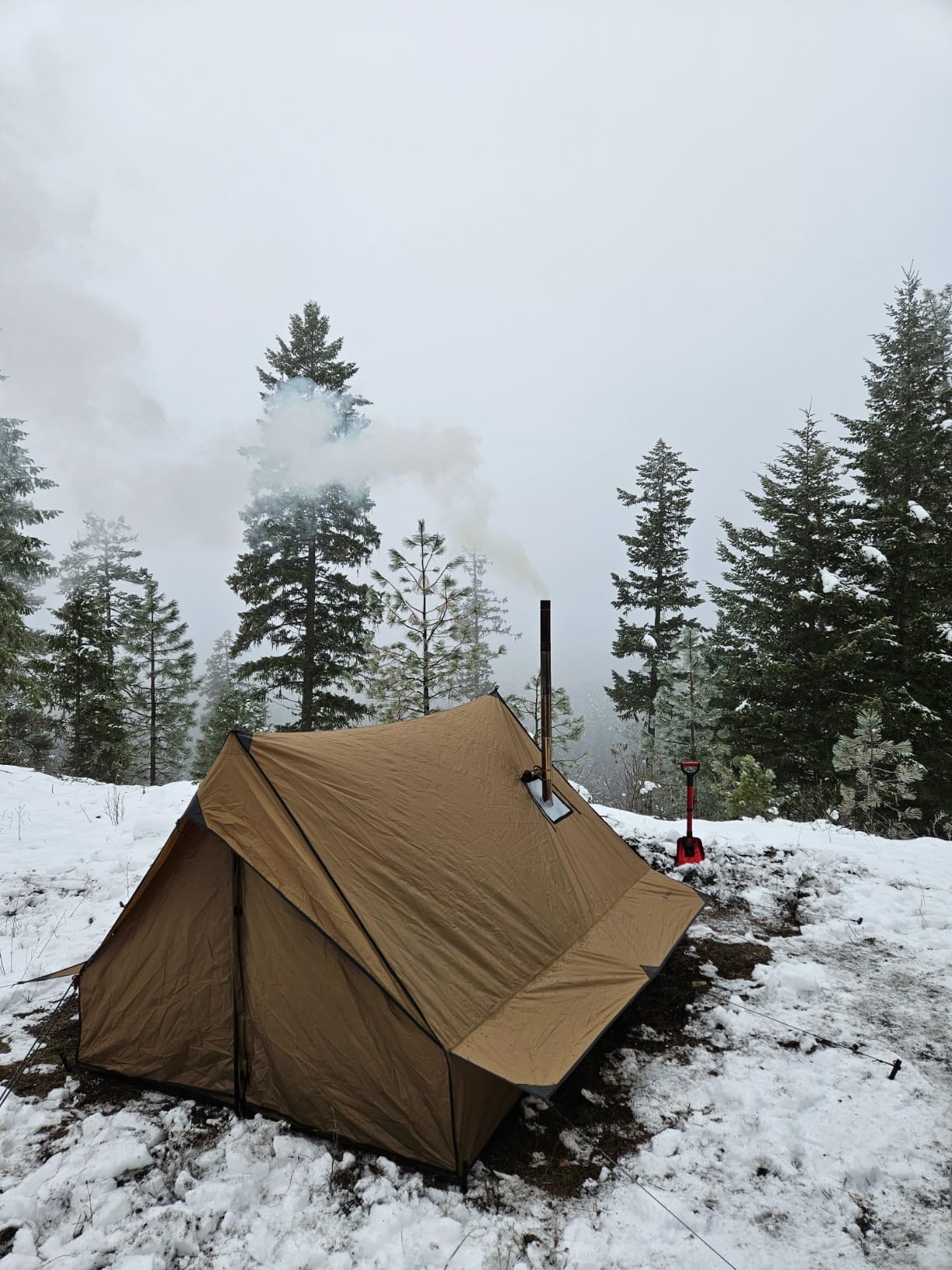
6
ALPS Mountaineering Tent
Best Durability. We didn’t expect to put a tent through that kind of trial, but when we headed out to North Dakota in late fall—right as an unexpected cold front rolled in—the ALPS Mountaineering Tent stepped up big time. Winds hit 70mph at one point, and this tent stood its ground like a bunker.
Setup was straightforward thanks to the shock cord aluminum poles and pole clips that just snap on. Even with frozen fingers, we had it standing in under 15 minutes. The 5000mm coated floor didn’t let a drop in, and the full-coverage rainfly paired with fully closable vents gave us complete control over insulation and airflow.
What really sold us was the livability. It has two vestibules, which made gear storage a breeze, and the two doors meant no awkward crawling over each other at night. The gear loft was perfect for our solar lantern—lit up the whole space like a mini lodge.
It’s a little on the heavy side, but if you’re not shaving grams for ultralight backpacking, it’s worth every ounce. It kept us warm, dry, and sane for three weeks straight. This one earned its nickname: “The Caterpillar.”
Feel free to hop onto the original brand site for more interesting options!
Pros:
✅ Rock-solid in high winds and snow
✅ Fast and easy setup even for beginners
✅ 2 person extreme cold weather tent
✅ Great storage with two vestibules and gear loft
Cons:
❌ Slightly heavy for backpacking
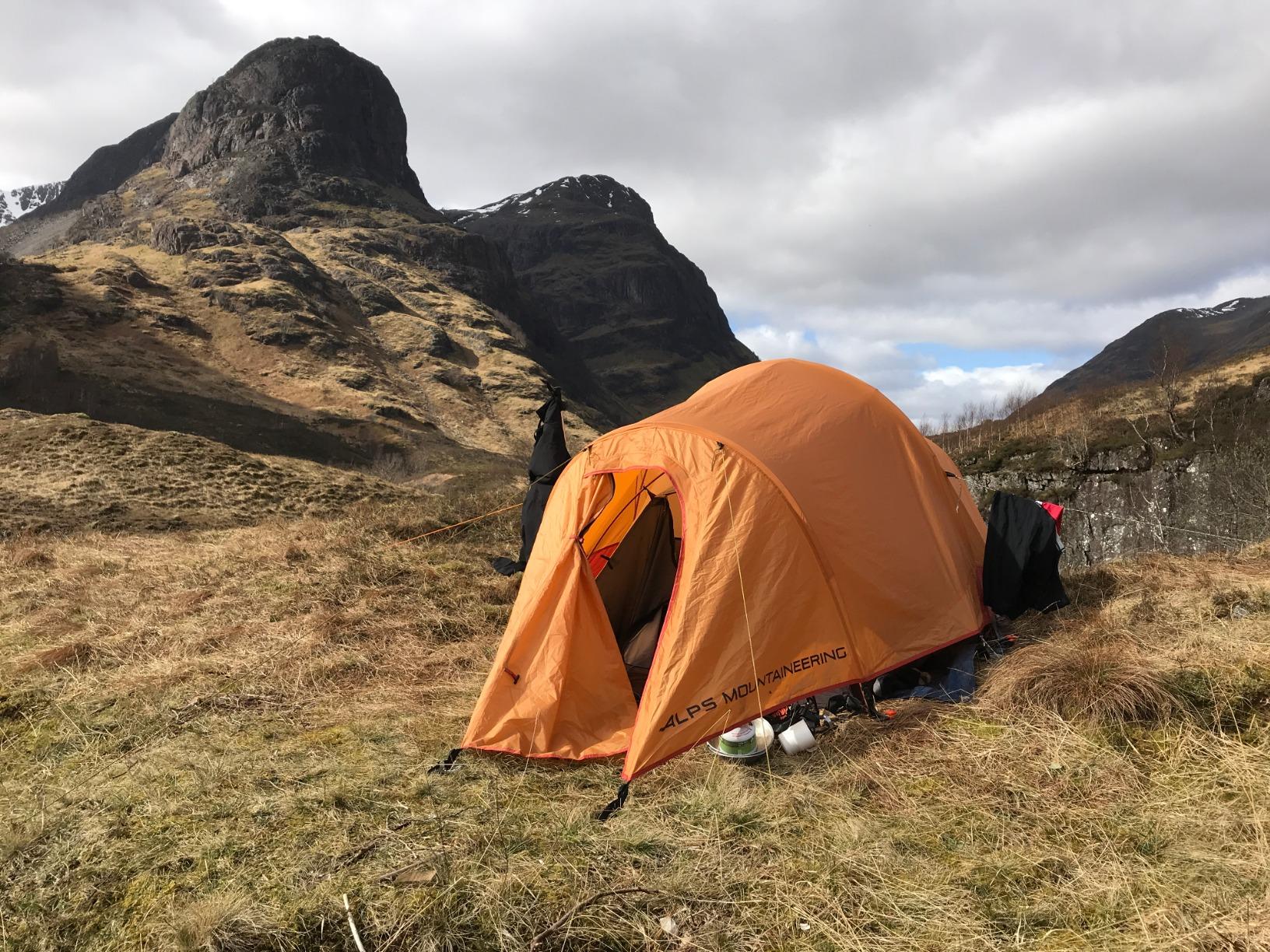
5
THE NORTH FACE Tent
We took THE NORTH FACE Tent up into Glacier National Park during a particularly icy weekend, and man—this tent didn’t just hold its own; it felt luxurious.
The X-frame design with pre-bent symmetrical poles made setup a total breeze. Even with gloves on, it was click-click-done. The 20D nylon ripstop fly with a 1200mm PU coating gave us full confidence when a storm rolled through one evening. Not a drop inside. And just as important—no condensation either. That’s rare in below-freezing temps.
What we loved most? The two vestibules. We had plenty of space to stash gear, cook under shelter, and just stretch out. Interior pockets were well thought out—headlamp in the ceiling, gloves in the side mesh, snacks within arm’s reach. The 75D polyester floor with a 5000mm coating held up great against icy terrain.
At under 6 pounds packed, it was surprisingly light for a winter-ready tent. This is one we’d take for fast-and-light alpine missions or even just chilly weekend escapes. It’s not cheap—but it’s North Face extreme cold weather tent. You’re paying for peace of mind in a snowstorm.
Also, do watch this detailed review of the product on YouTube, to get a better idea of the features and overall performance!
Pros:
✅ Lightweight and compact for hiking
✅ Two large vestibules for extra gear space
✅ No condensation issues in cold temps
Cons:
❌ Not ideal for more than two people
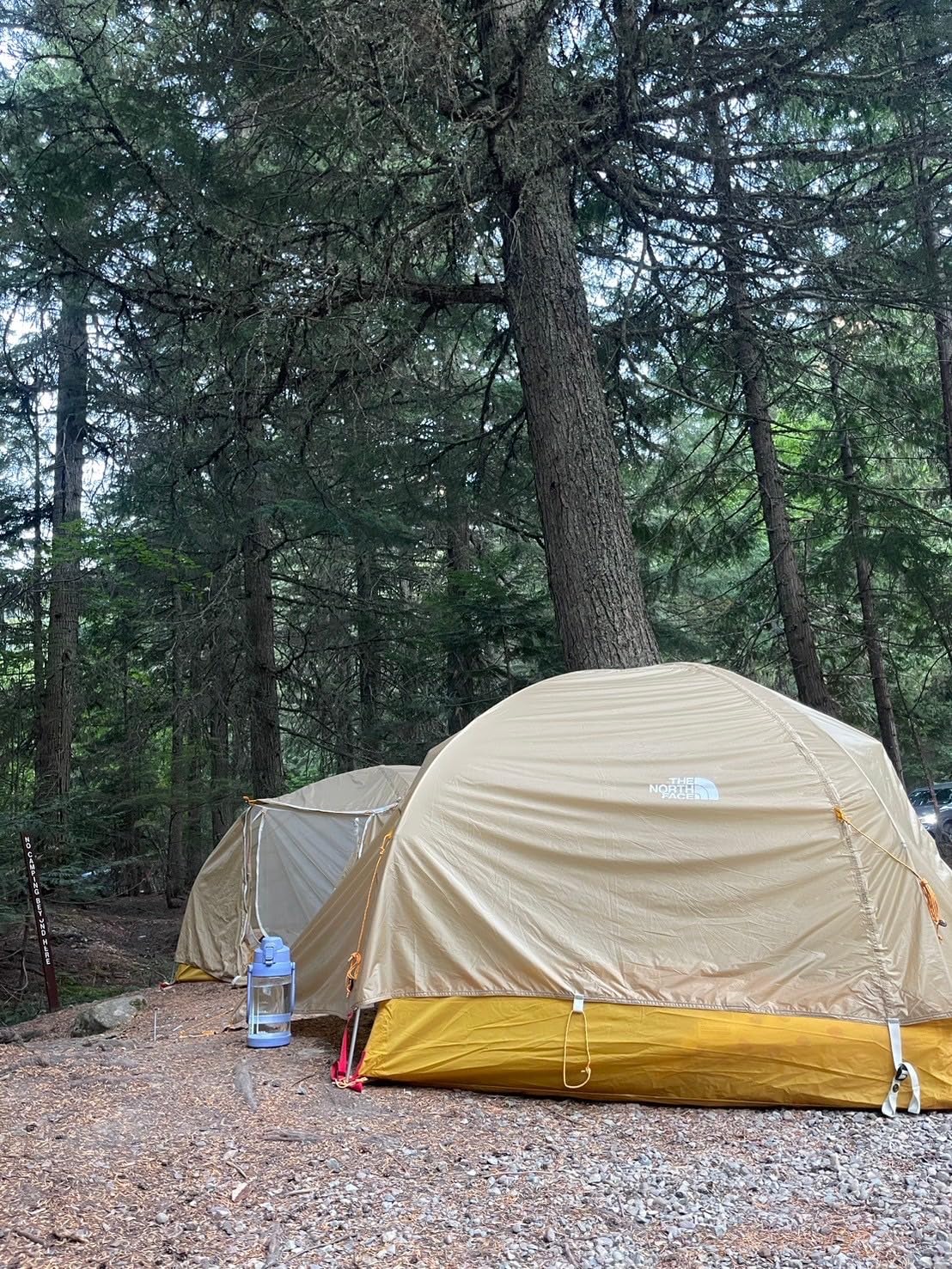
4
Marmot Thor Tent
Easiest Setup. When we needed something truly expedition-grade for a climb into the Rockies, we packed the Marmot Thor Tent. The name alone sets the tone, and it delivered like a hammer in the snow.
Pitching it was shockingly simple—identical pole lengths and a freestanding design meant less head-scratching and more coffee-sipping. Once up, it was a fortress. We had gear stashed in both vestibules, plenty of room inside to move, and zero issues with wet gear thanks to the seam-taped catenary-cut floor.
One of our favorite moments was waking up after a night of sleet and snow to find the inside warm and dry, thanks to that full-coverage fly with vents and snow flaps. Ventilation was spot-on. No frost buildup, no damp bags, just a dry, comfortable haven.
It’s built from a mix of polyamide and polyester—lightweight, rugged, and built to take abuse. We could tell this tent was designed by mountaineers for mountaineers.
Some users say there are cheaper options out there with similar specs—and that may be true. But when you’re halfway up a frozen ridge, you’re not going to care about saving fifty bucks. You’ll care this best extreme weather tent won’t quit on you.
P.S. You might also be interested in the 7 Best Quick Pop Up Camping Tents – No Poles, No Problem !
Pros:
✅ Superb waterproofing and snow protection
✅ Simple setup with identical pole lengths
✅ Ventilated well, even in harsh conditions
Cons:
❌ On the pricier side compared to similar models
3
BISINNA Winter Tent
During our late-winter trip up into the snowy backcountry of Montana, we tested the BISINNA Winter Tent, and this little guy genuinely surprised us. For a budget-friendly four-season tent, it delivered way more than we expected. At just 6.4 pounds and rolling down to the size of a loaf of bread, it was the perfect option for our buddy who preferred to pack light but still needed cold-weather protection.
The 210T tear-resistant polyester and PU 3000mm waterproof coating handled a night of snowfall just fine—though we did need to brush off the snow buildup to prevent any seep-through. The built-in snow skirt was a big plus. It helped trap warmth inside and kept the biting wind at bay, making the interior surprisingly cozy for its size.
We appreciated the double-layer mesh and fabric setup with two doors and two windows—it allowed for just the right amount of airflow and helped minimize condensation. One piece of advice? Make sure the inner and outer layers don’t touch; if they do, condensation can transfer through.
The waterproof foyer gave us just enough space to toss wet boots and gear outside the sleeping area—definitely a thoughtful design touch. It was a breeze to set up with the freestanding two-pole design, and one of our team members got it up solo in less than 10 minutes. The zippers were the only issue—we had to be gentle, especially around the vestibule.
Still, for the price, it’s a steal. If you’re a backpacker looking for warmth without breaking the bank, BISINNA’s one of the top tents for extreme weather and it’s worth a serious look.
Pros:
✅ Very affordable for a 4-season tent
✅ Good ventilation with mesh doors and windows
✅ Lightweight and easy to carry
Cons:
❌ Zippers can stick if vestibule is too tight
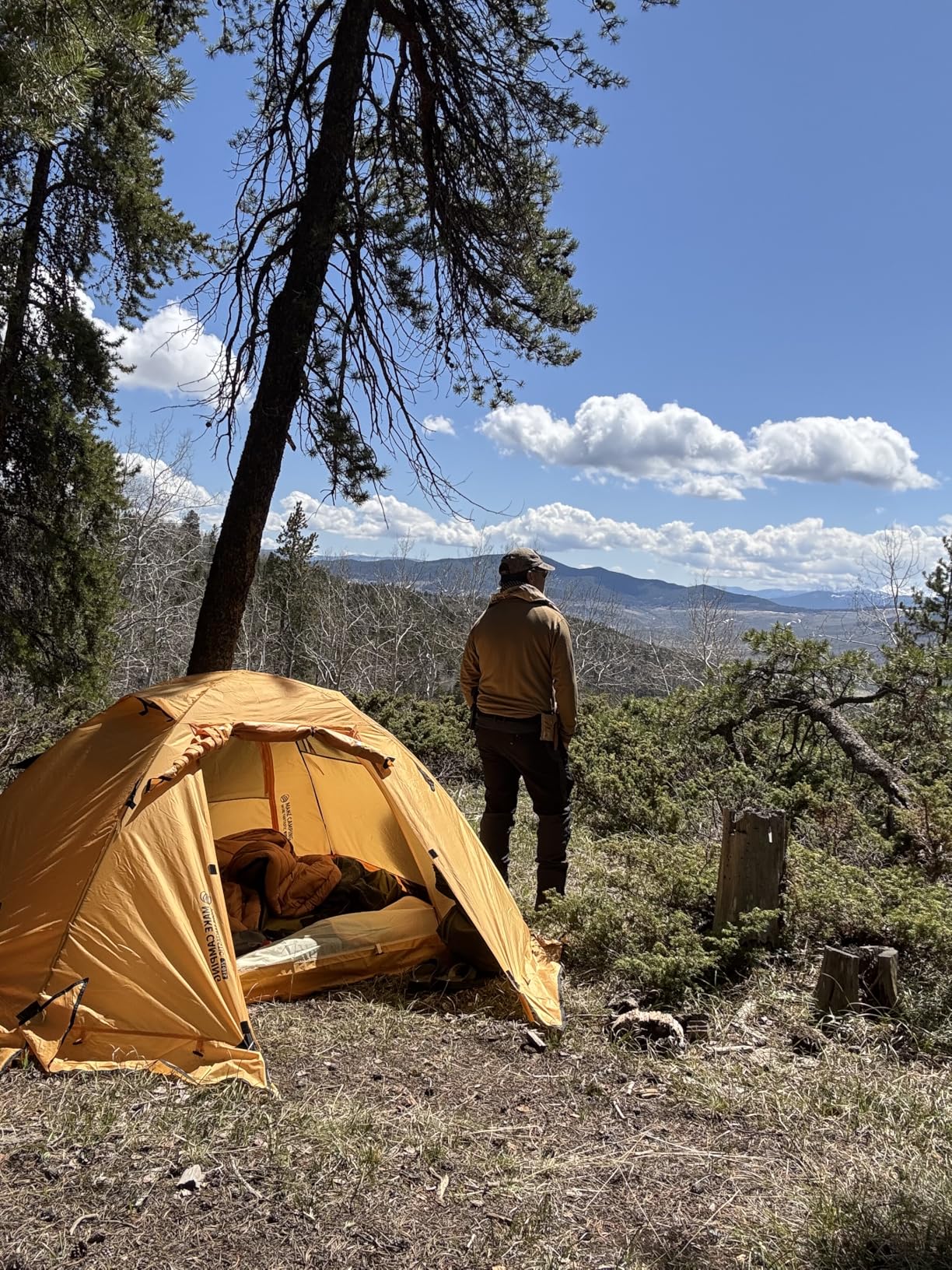
2
GEERTOP Camping Tent
When we took the GEERTOP Camping Tent out on a snowy, wind-whipped weekend in the northern woods, we weren’t expecting it to become the camp MVP—but it definitely earned that badge. This tent hits that sweet spot between lightweight backpacking performance and all-season weather protection.
Weighing just under 7 pounds, the GEERTOP was easy to carry on our hike, and when we reached the ridge clearing, the freestanding setup made it easy to pitch—even with cold hands and fading daylight. Setup took all of 7 minutes, and one of our team members joked that “even a 12-year-old scout could do this,” which, turns out, is exactly what one parent in an online review said.
The 210T polyester shell with a PU 3000mm waterproof coating shrugged off a sleety mix that rolled through at midnight. No leaks, no condensation inside either, thanks to the double-layer design and top-notch ventilation. We cracked open the windows a bit for airflow, and it kept the air fresh without compromising warmth. The snow skirt worked overtime keeping out drafts and moisture.
It was spacious enough for two people with gear—our team’s tall guy fit in comfortably with his military-style cot and pack. The vestibules aren’t huge, but they’re perfect for storing boots and a camp stove. All in all, the GEERTOP delivered big performance for its price and size. It’s one of those tents we’d trust again, whether it’s a chilly mountain trek or a rainy spring scout trip.
Feel free to check out our exclusive roundup: Tested in the Storm – the Best Heavy Rain Camping Tent Recommendations!
Pros:
✅ Holds up well in wind, rain, and snow
✅ Easy to pitch solo in under 10 minutes
✅ Spacious enough for cot and gear
Cons:
❌ Vestibules are small for extended trips
1
Rbm Outdoors Hot Tent
Best Overall. When we headed up into serious deep-freeze territory for our final winter expedition, we brought out the big guns—the Rbm Outdoors Hot Tent—and let me tell you, this thing is an absolute fortress in the snow. This wasn’t just a shelter. It was a warm, gear-organized, luxury cabin packed into a bag.
The umbrella-style pop-up frame system blew us away. No endless fumbling with poles—we just popped the center up and the tent practically pitched itself. Even with frozen fingers, setup was a breeze, and the aviation-grade aluminum frame stayed rock-solid in strong winds.
Inside, it felt like home. The double-layer Oxford fabric (300 PU outer, 210 PU inner) provided incredible insulation. We ran our stove inside, and the steel-ringed vent pipe outlet gave us full confidence that sparks wouldn’t damage anything. The removable heat shield on the interior wall where the stove sat was another genius feature—something many high-end tents forget to include.
We noticed zero condensation issues, which was thanks to RBM’s smart vent placement—including low intake vents near the stove and adjustable wall vents that kept air flowing without losing precious heat. Even our sleeping bags and clothes stayed bone-dry, which is a miracle on multi-day trips in sub-zero weather.
There was space galore—for gear, sleeping pads, and people. This tent is a legitimate multi-person shelter, not just a snug 2-person backpacker. The zipped-in floor, mesh windows, and gear storage pockets made organizing our stuff easy, and it felt more like a small winter cabin than a tent.
If you’re looking for the kind of shelter that laughs in the face of snowstorms and makes 10°F nights feel like toasty dreams, this is it. It’s not cheap—but this is one of those investments that pays you back in comfort, safety, and peace of mind. We finished that trip knowing we had just found the extreme cold weather tent for serious winter warriors.
P.S. We recommend checking out the original listing for more information as well as explore a variety of different options from this brand!
Pros:
✅ Excellent insulation with double-layer design
✅ Smart stove setup with built-in spark protection
✅ Fast pop-up style setup saves time
Cons:
❌ Premium price point—not budget-friendly
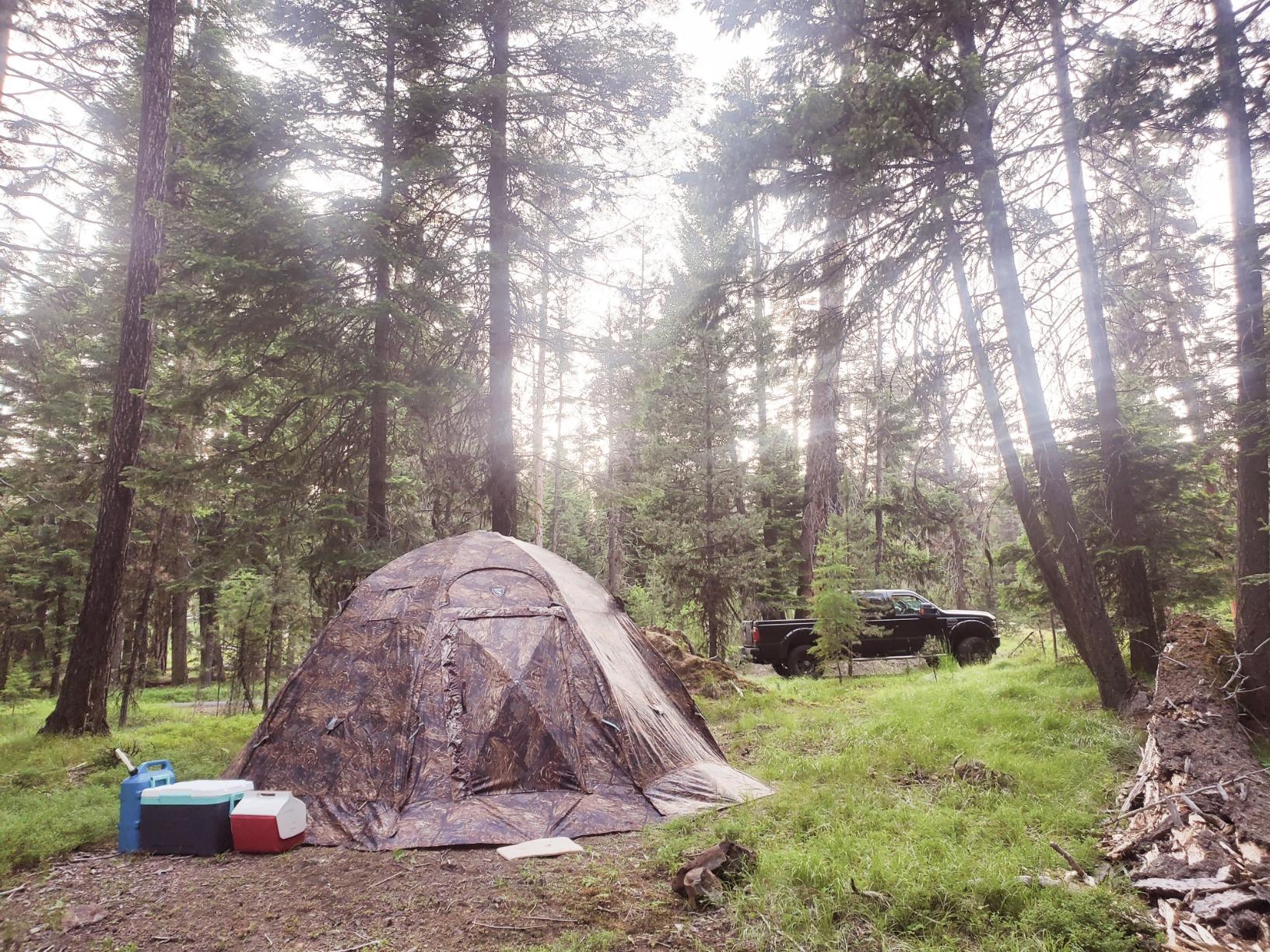
Our Verdict!
From the above roundup of the best extreme cold weather tents, we chose the Rbm Outdoors Hot Tent as our Best Overall option given its extraordinary performance in so many areas like comfort, weatherproofing, spaciousness, value and quality. On the other hand, however, we also set aside two other options that stood out in one specific feature. Check them out below.
- Best Durability: ALPS Mountaineering Tent
- Easiest Setup: Marmot Thor Tent
How to Choose the Best Extreme Cold Weather Tents
Tent camping in extreme cold? When the temperature plummets and snow starts falling sideways, your tent isn’t just a shelter—it’s your survival zone. Choosing the right extreme cold weather tent can mean the difference between waking up warm or waking up wondering why your sleeping bag feels like a block of ice. Here are three key features to look for when picking best extreme cold weather tents that can handle the harshest winter conditions:
1. Double-Wall Construction with Snow-Ready Fabric
Cold weather tents need more than just a tough shell. Look for double-layer designs—an inner breathable layer plus a rugged, waterproof outer fly. Materials like 210T or 300D polyester with PU coatings (3000mm or higher) offer excellent snow and moisture resistance. Also, a snow skirt at the base helps seal out drafts and keeps blowing snow from creeping in.
2. Sturdy Frame and Wind Resistance
Your tent poles and structure should be able to withstand strong alpine winds and snow buildup. Aluminum alloy poles (like 7001 or aviation-grade) are lightweight yet tough. Reinforced guy lines, multiple stake-out points, and dome-style designs help maintain shape and stability when conditions get gnarly.
3. Heat Retention and Stove Compatibility
In frigid temps, retaining heat is essential. Look for tents with tight-sealing doors, low vents for airflow control, and, if you’re going all in, stove compatibility with fireproof mats and vent sleeves. Some premium tents even include integrated spark protection, making them safe to use with wood stoves to turn your shelter into a cozy cabin.
What is the warmest kind of tent?
The warmest kind of tent is a hot tent—a specially designed shelter that allows for the safe use of a wood-burning stove inside. These tents are typically made with thick, insulated materials like canvas or heavy-duty polyester with high waterproof ratings and fire-resistant flooring or stove mats. The stove not only heats the space rapidly but also dries out gear and minimizes condensation, which is critical in extreme cold. Combined with features like double-wall construction, snow skirts, and airtight seals, hot tents create a cozy, cabin-like environment even in sub-zero conditions. If you’re camping in serious winter weather, nothing beats the comfort and heat of a well-ventilated, stove-ready hot tent.
What is the best tent material for cold weather?
The best tent material for cold weather is polyester or nylon with a high-denier count and a durable waterproof coating, like PU (polyurethane) 3000mm or higher. These synthetic fabrics are lightweight yet tough, resist moisture, and don’t sag when wet like canvas. For extreme cold, ripstop nylon or Oxford polyester is especially reliable—they’re tear-resistant, UV-protected, and trap heat better when used in double-wall tents. Pair that with a good snow skirt and sealed seams, and you’ve got a shelter that shrugs off snow, wind, and sub-zero temps like a champ.
Do tents get cold at night?
Yes, tents absolutely get cold at night, especially in winter or high-altitude environments. While a tent can block wind and trap a bit of body heat, it doesn’t generate warmth on its own. The inside temperature can drop close to the outside temperature if you’re not using proper insulation, a sleeping pad, or a heat source like a camping stove (in hot tents). Condensation can also make it feel colder if ventilation is poor. To stay warm, it’s all about layering—insulated gear, a solid sleeping bag, and a well-sealed tent designed for cold weather are key.
